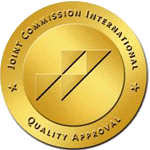Allergies caused by dust can be prevented

Pollen allergy is a widespread disease associated with an increased reaction of the human immune system to pollen of certain plant species, and manifested by allergic inflammation of the respiratory tract, visual organs, and skin damage.
Typically, with inflammation of the respiratory system, pollen allergies occur in the form of allergic rhinitis, nasopharyngitis, pharyngitis, bronchitis or even bronchial asthma.
Skin lesions can be in the form of contact allergic dermatitis, urticaria, angioedema.
The manifestations of pollen allergy are strictly confined to the flowering of a certain type of plant to which a person has an allergic reaction. Such exacerbations occur at approximately the same time every year. The bloom of pollen allergens begins or ends depending on the type of plant itself.
Depending on the season, there are three peak periods for pollen allergy:
- spring (April-May), caused by pollen from willow, elm, ash, maple, alder, walnut, oak, hazel, birch, and other shrubs and trees;
- spring-summer (May-August), which is caused by pollen of bluegrass, corn, hedgehog, ryegrass, wheatgrass, timothy, reed grass, bromegrass, fescue, rye and other cereal grasses, as well as linden, spruce, pine, buckwheat, plantain, dandelion ;
- summer-autumn (August-October), caused by pollen of wormwood, nettle, ragweed, quinoa and other weeds. In our region, hay fever due to tree pollen is most common and more severe.
Weather factors have a very important influence on the concentration of allergens in the air. In clear weather, flowering usually increases, in cloudy weather it decreases.
Laboratory diagnostics. To determine the culprit allergens that cause allergic reactions, a laboratory blood test is used to determine the content of specific immunoglobulins of the E-reagin class, as well as the excess of eosinophils.
Treatment of pollen allergy
When an allergy to pollen occurs, the patient is prescribed antihistamines, topical vasoconstrictors, and eye drops. If the patient’s general condition is severely disturbed, intensive therapy, intramuscular and intravenous injections may be prescribed to improve breathing, reduce mucous secretions, and relieve swelling of the nasal cavity and eyes.
Allergen-specific immunotherapy
During the period of remission, when the symptoms of pollen allergy do not appear at all or appear very weakly, allergen-specific immunotherapy (ASIT), which is also called specific hyposensitization, is used as treatment. After the course, which is determined for each individual, the achieved effect helps the patient to calmly endure periods of flowering.



